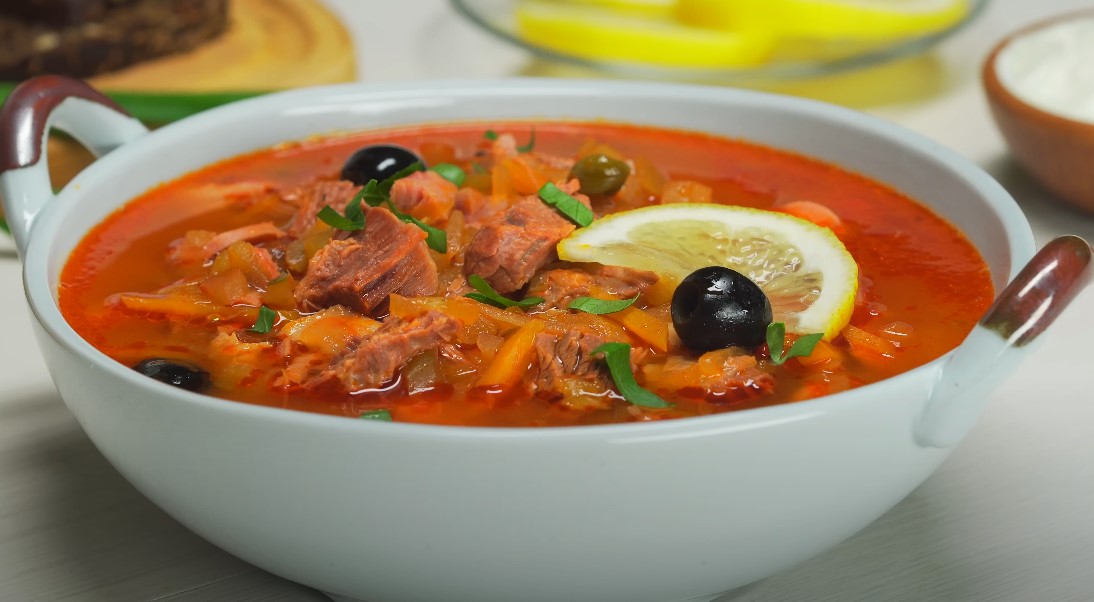Russian cooking brings together cold winters, vibrant gatherings, and ancient techniques that have traveled from generation to generation. Picture robust soups, little dough parcels full of savory goodness, and sweet layered cakes that melt in the mouth.
Long ago, I spent a good chunk of time chasing old-school methods, picking up secrets from local cooks who knew how to prepare cabbage soup the right way and how to get borscht tasting earthy with just the right tang.
That hands-on training taught me the importance of fermentation, long simmering, and care with each step. Those hearty, down-to-earth dishes form the core of the culinary landscape.
One spoonful of a truly authentic beet soup can erase any memory of a watery Western knockoff. That’s the magic in each bowl or plate: centuries of technique, mingling with personal touches from families all over Russia.
Ready for a lineup of iconic foods that capture the spirit of the region? Keep reading. Each entry includes a recipe for anyone eager to give them a try at home—complete with practical pointers and a dash of personal insight.
1. Borscht
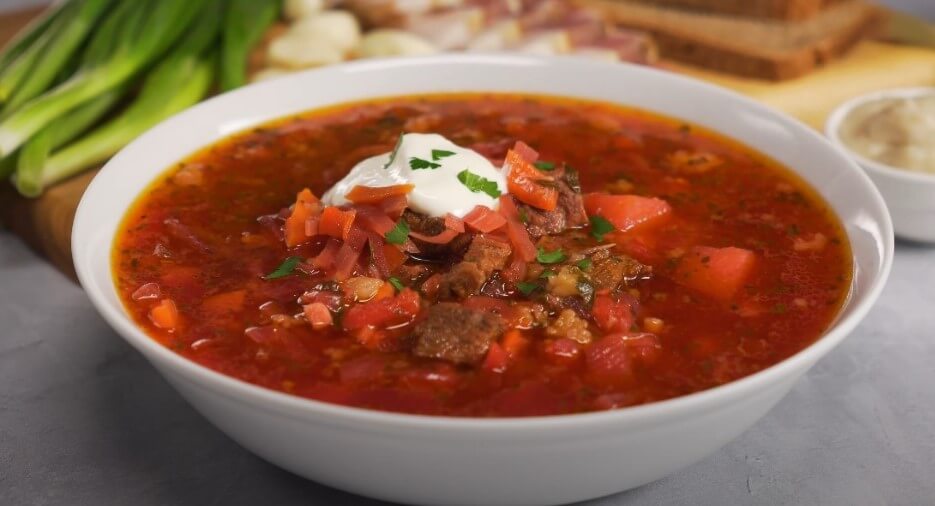
Borscht has a vibrant color and an even brighter flavor. Many people outside Eastern Europe think of it as a plain beet soup, but that sells it short. The real deal tends to be layered with sweet, sour, and savory notes.
Real borscht often includes beef or pork, cabbage, potatoes, and carrots, simmered in a broth that’s tinted a distinctive deep crimson. A swirl of sour cream on top finishes it in a way that’s both cooling and tangy.
A quick note regarding variations: Some households add a fermented component to accentuate the sourness, while others rely purely on fresh vegetables and a bit of tomato paste.
Both approaches yield a deeply comforting result. It’s best to let the pot rest a little so flavors can mingle; some folks even swear by letting it sit overnight.
Ingredients
- 2 medium beets, peeled and grated
- 1 onion, finely chopped
- 2 carrots, grated
- 3 potatoes, diced
- 1/4 head of cabbage, shredded
- 2 cloves garlic, minced
- 4 cups beef or vegetable broth
- 2 tablespoons tomato paste
- 2 tablespoons vegetable oil
- Salt and pepper to taste
- Sour cream and fresh dill for serving
Instructions
- Warm oil in a large pot over medium heat. Sauté the onion and garlic until soft.
- Add carrots and beets. Cook around five minutes.
- Stir in tomato paste, then toss in potatoes and broth. Bring everything to a boil.
- Lower heat and simmer until the potatoes become tender, roughly 15 minutes.
- Add cabbage and cook for five more minutes. Season with salt and pepper.
- Ladle into bowls and finish with sour cream and fresh dill.
2. Pelmeni
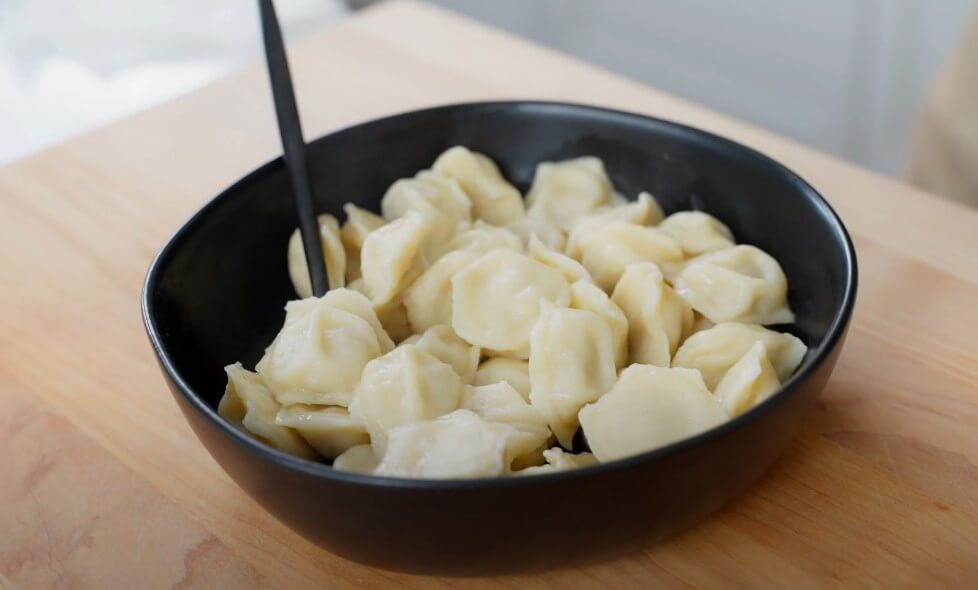
Pelmeni are small dough parcels that typically encase a mix of ground pork and beef. They originate from Siberia, where harsh winters demanded hearty meals that could be stockpiled outdoors by freezing.
The shape is a half-moon or round pouch, pinched shut around the filling. Many Russians keep a bag of pelmeni in the freezer as a go-to fix when time is short.
The difference between genuinely homemade pelmeni and a supermarket variant is night and day. Hand-rolled dough is lighter, the filling is fresher, and the mouthfeel is more rewarding.
Traditional technique demands fairly thin wrappers—too thick, and the dish becomes gummy.
Ingredients
For the Dough
- 2 cups all-purpose flour
- 1/2 cup water
- 1 egg
- 1/2 teaspoon salt
For the Filling
- 1/2 pound ground beef
- 1/2 pound ground pork
- 1 small onion, finely chopped
- 2 cloves garlic, minced
- Salt and pepper to taste
Instructions
- Combine flour and salt in a bowl. Add egg and water, mixing until a dough forms. Knead until smooth, then rest for half an hour.
- In a separate bowl, mix ground meats, onion, garlic, salt, and pepper.
- Roll out the dough thinly, then use a round cutter to make circles.
- Put a small spoonful of filling in each circle, fold into a half-moon, and pinch the edges shut.
- Boil salted water in a large pot. Drop in pelmeni and cook until they float, plus another 2–3 minutes.
- Serve piping hot with a bit of butter or sour cream.
3. Blini

Blini are far more than just a crepe in Russian culture—they’re symbols of the sun and serve as a reason to celebrate during Maslenitsa, a weeklong festival marking the end of winter.
Wheat flour or buckwheat flour can be used, creating a delicate pancake that’s perfect for rolling up with sweet or savory fillings.
A personal trick is to ensure the batter is lump-free and rest it for a bit, so the flour hydrates nicely. Then the pan only needs a light coat of oil, otherwise the pancakes might soak up too much grease.
Ingredients
- 1 cup all-purpose flour
- 1 1/4 cups milk
- 2 eggs
- 2 tablespoons sugar
- 1/2 teaspoon salt
- 2 tablespoons melted butter
- Extra butter or oil for frying
Instructions
- In a bowl, whisk eggs, sugar, and salt. Add milk and continue mixing.
- Slowly stir in flour to prevent lumps, then mix in melted butter.
- Warm a non-stick skillet over medium heat, lightly greased with butter or oil.
- Pour in a small ladle of batter, tilt the skillet to spread it thin.
- Cook for about a minute or two until edges lift easily, then flip.
- Plate up with sour cream, jam, honey, or even caviar for a special touch.
4. Shchi
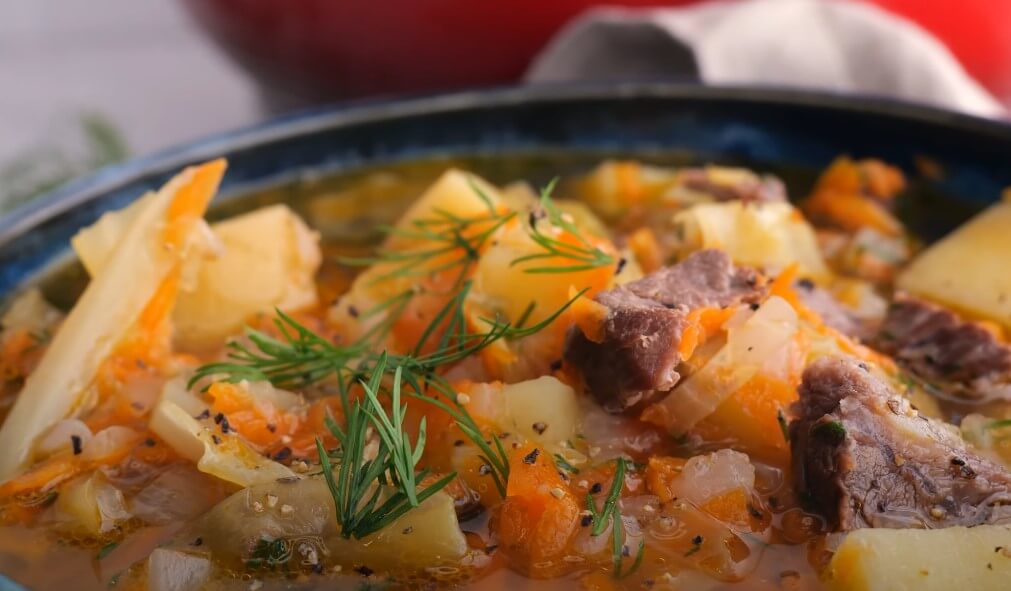
Shchi predates many written records in Russian history, demonstrating how essential cabbage has always been. A bowl of warm Shchi tends to be straightforward yet satisfying, relying on fresh or fermented cabbage.
Broth can include beef, but it’s not a must—some prefer a vegetarian version. Sour shchi relies on sauerkraut rather than fresh cabbage. Either way, a slice of rye bread and a spoonful of sour cream are typical companions.
Ingredients
- 1/2 head of cabbage, shredded
- 1 onion, chopped
- 2 carrots, sliced
- 2 potatoes, diced
- 1 tomato, chopped
- 4 cups beef or vegetable broth
- 2 tablespoons vegetable oil
- 2 cloves garlic, minced
- Salt and pepper to taste
- Sour cream and fresh dill for garnish
Instructions
- Warm oil in a large pot over medium heat. Sauté onion and garlic until fragrant.
- Add carrots and potatoes, cooking for about five minutes.
- Toss in cabbage and chopped tomato; continue cooking until the cabbage wilts.
- Pour in the broth, bring everything to a boil, then lower heat and simmer until vegetables are tender.
- Season with salt and pepper. Ladle into bowls and add sour cream and fresh dill on top.
5. Beef Stroganoff
Beef Stroganoff dates back to the 19th century, but it has long since broken free of Russia’s borders. Some renditions outside the homeland add all sorts of extras.
Purists prefer a simple sauce of sour cream, onions, and mushrooms, plus a touch of mustard for brightness. The goal is tender meat in a balanced sauce—not an overpowering stew.
Ingredients
- 1 pound beef sirloin or tenderloin, thinly sliced
- 1 medium onion, finely chopped
- 1 cup mushrooms, sliced
- 2 tablespoons butter
- 1 tablespoon all-purpose flour
- 1 cup beef broth
- 1 cup sour cream
- 1 teaspoon Dijon mustard
- Salt and freshly ground black pepper
- Chopped fresh parsley for garnish
- Egg noodles or rice for serving
Instructions
- Warm one tablespoon of butter in a skillet over medium heat. Brown the beef strips, then set them aside.
- In the same skillet, add the other tablespoon of butter. Sauté onions until translucent, then toss in mushrooms. Cook until tender.
- Dust the flour over onions and mushrooms, mixing well. Cook about a minute to remove raw flour flavor.
- Gently pour in beef broth, stirring constantly as the sauce thickens.
- Lower the heat and fold in sour cream plus Dijon mustard. Stir until smooth.
- Return the beef to the skillet for another 2–3 minutes. Season to taste.
- Serve over noodles or rice, garnished with parsley.
6. Olivier Salad
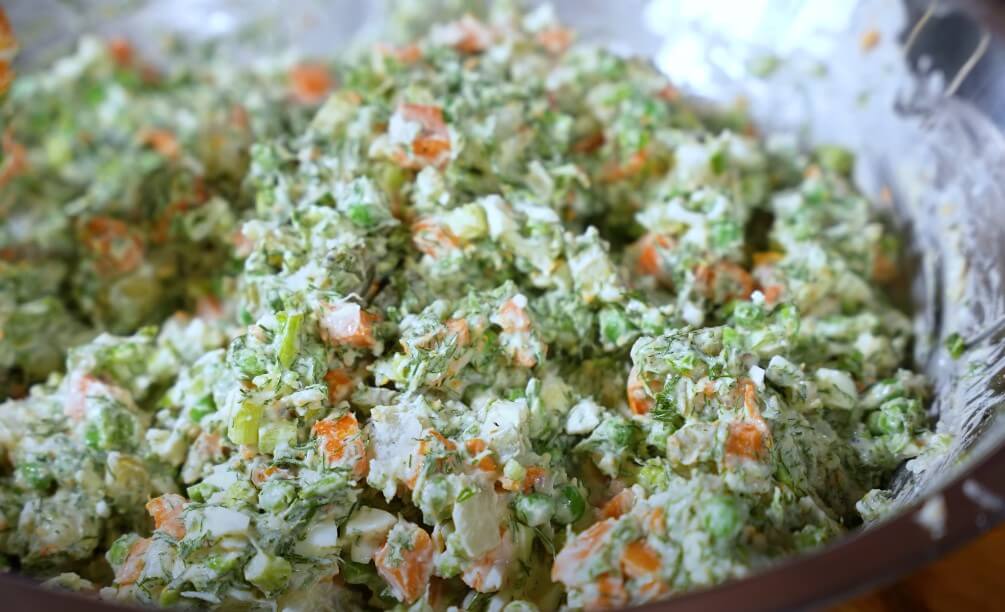
No Russian New Year’s celebration would be complete without a massive bowl of Olivier Salad. Chopped potatoes, carrots, peas, eggs, pickles, and a choice of ham or chicken meet a hefty dose of mayonnaise.
Many add a little chopped apple for sweetness. The final product offers a chunky, creamy medley that stands proudly on any party table.
Ingredients
- 4 medium potatoes, boiled, peeled, and diced
- 3 medium carrots, boiled and diced
- 1 cup peas, boiled or canned and drained
- 4 hard-boiled eggs, chopped
- 1 cup cooked chicken or ham, diced
- 3–4 pickles, diced
- 1 small apple, peeled and diced (optional)
- 1 cup mayonnaise
- Salt and pepper to taste
- Chopped fresh dill for garnish
Instructions
- In a large bowl, combine diced potatoes, carrots, peas, eggs, meat, pickles, and apple if used.
- Fold in the mayonnaise until all ingredients are well coated.
- Season with salt and pepper.
- Cover and chill for at least an hour.
- Add a sprinkle of dill on top before serving.
7. Pirozhki

Pirozhki are small pastries, either baked or fried, stuffed with fillings that can be savory or sweet. Meat, cabbage, mushrooms, potato, jam…all are fair game.
Many enjoy them as a quick snack with tea. The dough is soft and lightly sweet, so it complements both sweet and savory fillings alike.
Ingredients
For the Dough
- 4 cups all-purpose flour
- 1 packet (2¼ teaspoons) active dry yeast
- 1 cup warm milk
- 2 tablespoons sugar
- 1 teaspoon salt
- 2 tablespoons vegetable oil
- 1 egg
For the Filling
- 1 pound ground beef or pork
- 1 medium onion, finely chopped
- 1 tablespoon vegetable oil
- Salt and pepper to taste
- (Boiled potatoes, mushrooms, or cabbage for variation)
Instructions
- In a small bowl, dissolve yeast and sugar in warm milk. Let it rest around 10 minutes until frothy.
- In a big mixing bowl, stir together flour and salt. Add yeast mixture, oil, and egg. Knead until smooth. Cover and let the dough rise for roughly an hour.
- While dough rises, prepare the filling by heating oil in a skillet over medium heat. Sauté onion, then add ground meat. Cook until browned. Season with salt and pepper. Cool the mixture.
- Preheat oven to 375°F (190°C). Line a baking sheet with parchment paper.
- Deflate the risen dough and divide into equal pieces. Roll each into a circle, about four inches in diameter.
- Place a spoonful of filling in the center. Fold into a half-moon shape, pinching edges shut.
- Arrange on the baking sheet. (Optional: brush tops with beaten egg.)
- Bake 20–25 minutes until golden.
- Serve warm, possibly with sour cream or a dipping sauce on the side.
8. Kasha
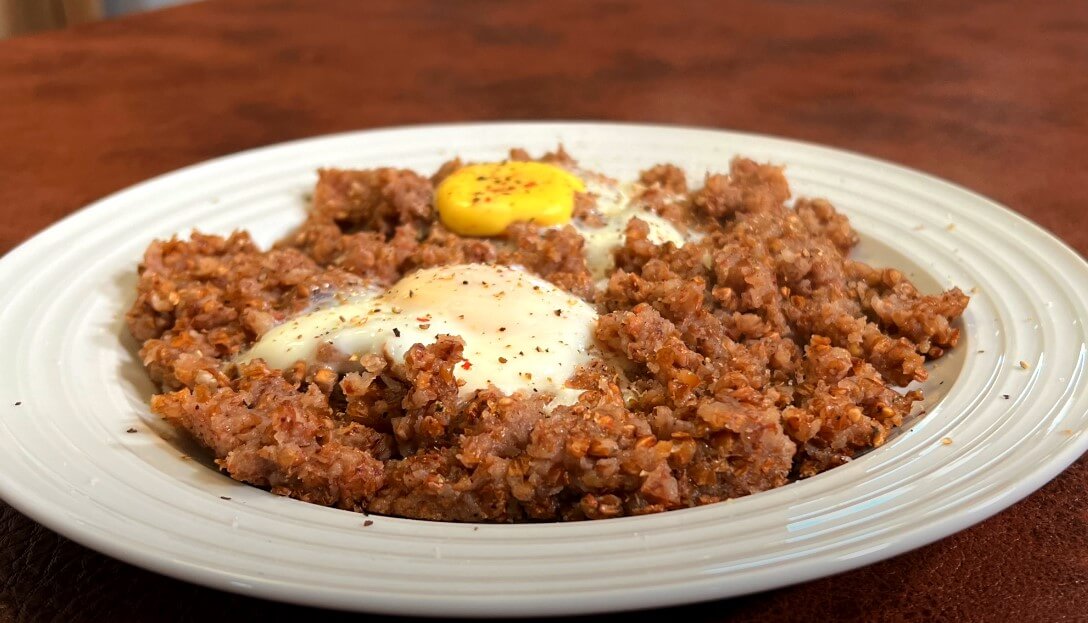
Kasha refers to porridges prepared with different grains. The buckwheat variant has a firm place in many Russian homes.
Don’t expect it to be mushy; properly cooked buckwheat has a mildly nutty flavor and a pleasantly chewy texture. It can be plain or jazzed up with mushrooms, onions, butter, or even bits of meat.
Ingredients
- 1 cup buckwheat groats
- 2 cups water
- 1/2 teaspoon salt
- 2 tablespoons butter
Instructions
- Rinse buckwheat under cold water to remove any debris.
- In a saucepan, bring water to a boil. Add salt.
- Stir in the rinsed buckwheat. Reduce heat, cover, and let it simmer for about 15 minutes or until water is absorbed.
- Turn off heat and let it sit, still covered, for five minutes.
- Stir in butter before serving.
9. Solyanka
View this post on Instagram
Solyanka is a meaty, tangy, and sometimes spicy soup that stands in stark contrast to the milder flavors found in other broths.
Pickled cucumbers, olives, capers, and lemon slices inject a burst of sourness, while a combination of smoked meats (like sausage or ham) lends richness. The base is often a tomato-enriched stock.
Ingredients
- 2 tablespoons vegetable oil
- 1 onion, finely chopped
- 2 pickles, diced
- 1 tablespoon tomato paste
- 6 cups beef broth
- 1/2 pound assorted smoked meats (sausage, ham)
- 1/2 cup pitted black olives
- 1 lemon, thinly sliced
- 2 bay leaves
- Salt and pepper to taste
- Sour cream and fresh dill for serving
Instructions
- Warm oil in a large pot over medium heat. Sauté onion until translucent.
- Add diced pickles and tomato paste, cooking a couple of minutes.
- Pour in broth, bring to a boil.
- Add smoked meats, olives, lemon slices, and bay leaves. Reduce heat; simmer about 15 minutes.
- Season with salt and pepper.
- Serve hot, topped with sour cream and a bit of fresh dill.
10. Medovik
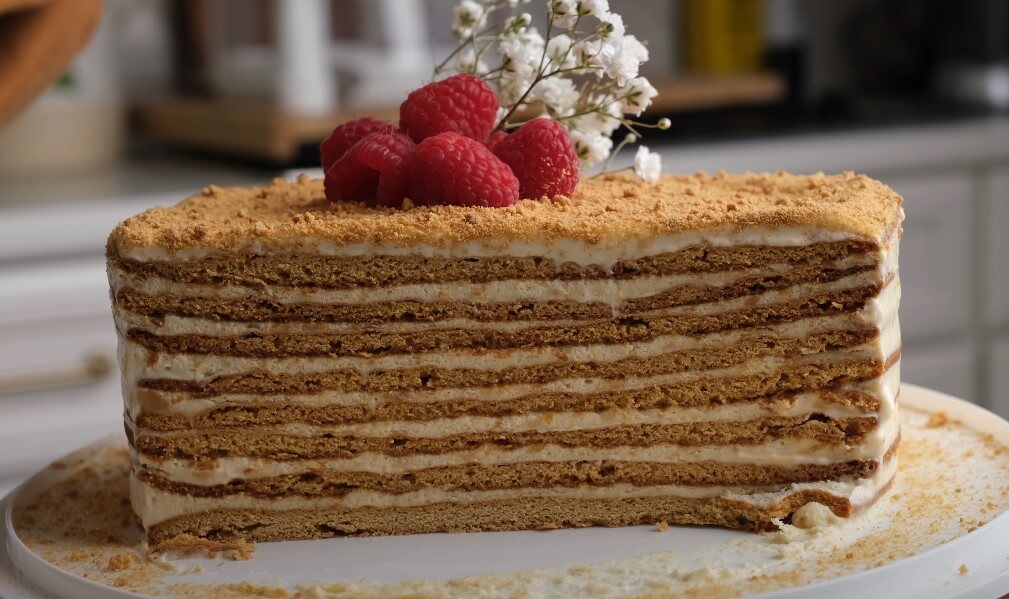
Medovik is a layered masterpiece that demands patience but delivers heavenly results. Thin, honey-infused cake rounds are stacked with a sour cream or whipped condensed milk filling.
After a night in the fridge, the layers soften and meld, creating a moist dessert that never fails to impress. Slices show off gorgeous layers, each tinted by golden honey.
Ingredients
For the Cake Layers
- 1/2 cup honey
- 1/2 cup sugar
- 1/4 cup unsalted butter
- 2 large eggs
- 1 teaspoon baking soda
- 3 cups all-purpose flour
For the Cream Filling
- 2 cups sour cream
- 1 cup powdered sugar
- 1 teaspoon vanilla extract
Instructions
- Over medium heat, combine honey, sugar, and butter in a saucepan. Stir until melted.
- Remove from heat, let it cool slightly, then whisk in eggs.
- Add baking soda, mix well. Slowly add flour until a dough forms.
- Divide dough into eight equal pieces. Roll each one thin.
- Bake each round at 350°F (175°C) for 5–7 minutes, until golden.
- For the filling, stir sour cream, powdered sugar, and vanilla extract until smooth.
- Layer the baked rounds with the cream.
- Refrigerate overnight, letting the flavors meld.
- Serve chilled, sometimes with crushed nuts or a drizzle of honey on top.
Final Thoughts
Russia’s cuisine shines brightest when shared, frequently paired with friendly banter, laughter, and a healthy dose of tea—or something stronger, depending on preference.
There’s always a focus on community: an entire table laden with pirozhki, steaming pots of soup, and a layered honey cake waiting in the wings.
Each dish also tells part of the story of a culture shaped by frigid winters, short but intense summers, and a long-held belief in using available resources to maximum effect.
For anyone game to cook these timeless specialties, the recipes above are a start. Slip into a homey mode of cooking: knead dough by hand, simmer soup until it smells just right, and remember that sometimes, letting a pot rest overnight is half the charm.

